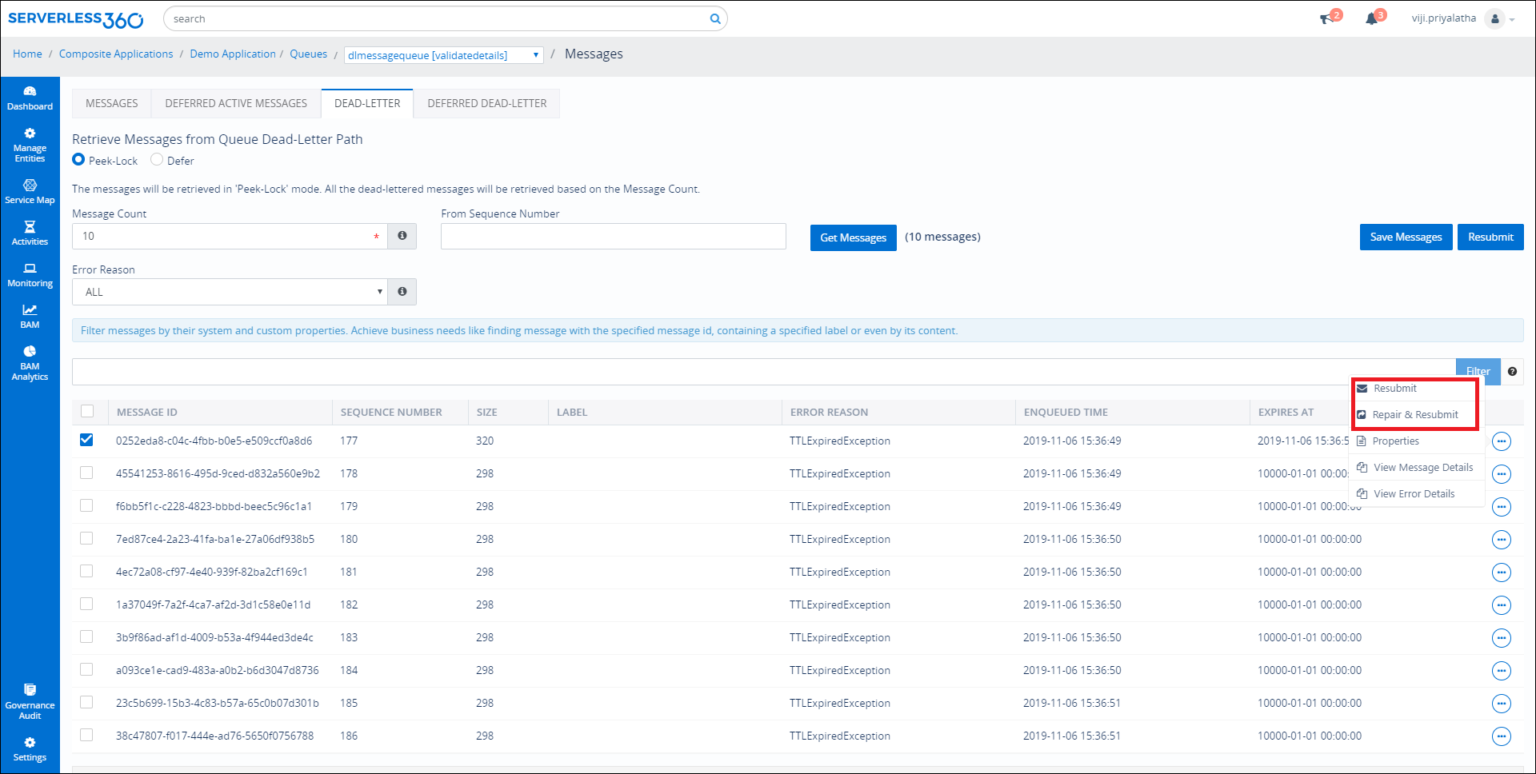
Another one would be sending the message back to sender as the message was invalid or sending it back to the queue after changing the configuration. From the illustration above we can see the pattern is that if a message cannot be processed or fails during sending, it should be moved to a dead letter queue. Of course you can define any follow-up action with this message from a DLQ. This is done by configuring an additional Sender Channel and ICO which makes sure the message is always persisted (e.g. In addition to the “real” integration flow, that consumes messages from a queue, an error handling flow will be implemented.

When a message is dead lettered, I want to move it from the DLQ to main so that the system can retry message processing. I am using Service Bus Explorer to peek at messages in the Queue. Now that we understand, how messages are moved to a DLQ, we can proceed consuming them as well. Messages that are not processed are moved to the Dead Letter Queue for investigation by a person. Select dead letter tab and click to get a specified count of messages. Click the queue whose dead letter messages must be processed, this will lead to a message retrieval dashboard. no receiver can be found during routing and the first staging is configured after receiver determinationĮrror example situation here: a not existing adapter module has been added to the channel configuration: Now, look at the step-by-step process to resubmit the dead-lettered messages in Serverless360. Currently it is not possible to create an alert when a message is dead-lettered.

Deferred messages can be discovered via message browsing if an application loses track of them. In case the message processing fails before being persisted within PI, it is moved to a Dead Letter Queue Deferred messages remain in the main queue along with all other active messages (unlike dead-letter messages that live in a subqueue), but they can no longer be received using the regular receive operations.The purpose of the dead-letter queue is to hold messages that cannot be delivered to any receiver, or messages that could not be processed. A sender channel on SAP PI/PO tries to consume a message from a queue. Azure Service Bus queues and topic subscriptions provide a secondary sub-queue, called a dead-letter queue.Scenario with Microsoft Azure Service Bus: This document explains the use and configuration. We have recently added a Dead Letter Queue (DLQ) Support to our AMQP Adapter.


 0 kommentar(er)
0 kommentar(er)
